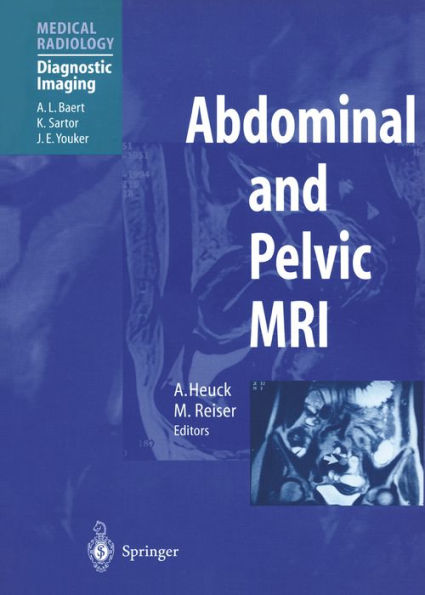Abdominal and Pelvic MRI
While MRI has proved itself to be an excellent diagnostic noninvasive modality for imaging of the brain, medulla, and musculoskeletal system due to its high intrinsic con trast resolution and tissue characterisation potential based on the judicious application of specific sequences, this has not been the case in the abdomen and pelvis. The reasons are the long exposure time and the lower spatial resolution, inherent to MRI. However, during recent years considerable process has been achieved in MRI of the abdominal and pelvic organs due to the development of new and more rapid imaging sequences and the routine clinical application of specific magnetic resonance contrast media. Consequently for some anatomical areas such as the female genital organs and the biliary system MRI is already the best performing morphological diagnostic modality. However, the question arises as to wether MRI, given its performance capabilities, should not also be considered a primary diagnostic modality for the study of parenchymal organs like the liver, spleen, and pancreas, and not merely as a complen tary modality to solve residual problems after ultrasonography and computed tomog raphy have been performed. Although the future role of MRI in respect of the gas trointestinal tube itself is still somewhat unclear, some possibilities for routine clinical use are becoming visible even in this abdominal field.
"1002599861"
Abdominal and Pelvic MRI
While MRI has proved itself to be an excellent diagnostic noninvasive modality for imaging of the brain, medulla, and musculoskeletal system due to its high intrinsic con trast resolution and tissue characterisation potential based on the judicious application of specific sequences, this has not been the case in the abdomen and pelvis. The reasons are the long exposure time and the lower spatial resolution, inherent to MRI. However, during recent years considerable process has been achieved in MRI of the abdominal and pelvic organs due to the development of new and more rapid imaging sequences and the routine clinical application of specific magnetic resonance contrast media. Consequently for some anatomical areas such as the female genital organs and the biliary system MRI is already the best performing morphological diagnostic modality. However, the question arises as to wether MRI, given its performance capabilities, should not also be considered a primary diagnostic modality for the study of parenchymal organs like the liver, spleen, and pancreas, and not merely as a complen tary modality to solve residual problems after ultrasonography and computed tomog raphy have been performed. Although the future role of MRI in respect of the gas trointestinal tube itself is still somewhat unclear, some possibilities for routine clinical use are becoming visible even in this abdominal field.
66.99
In Stock
5
1

Abdominal and Pelvic MRI

Abdominal and Pelvic MRI
66.99
In Stock

Product Details
| ISBN-13: | 9783642181948 |
|---|---|
| Publisher: | Springer-Verlag New York, LLC |
| Publication date: | 12/09/2012 |
| Series: | Medical Radiology |
| Sold by: | Barnes & Noble |
| Format: | eBook |
| File size: | 41 MB |
| Note: | This product may take a few minutes to download. |
From the B&N Reads Blog
